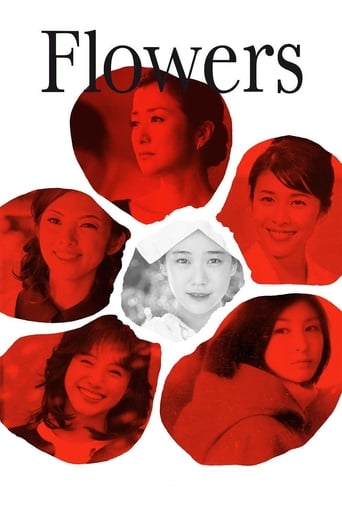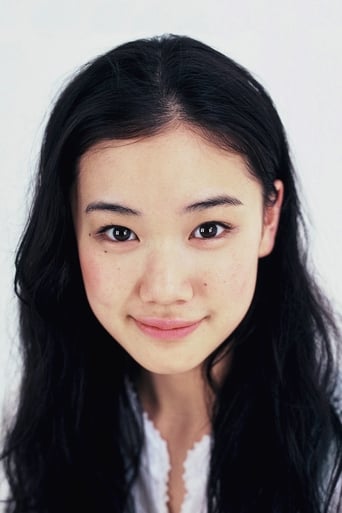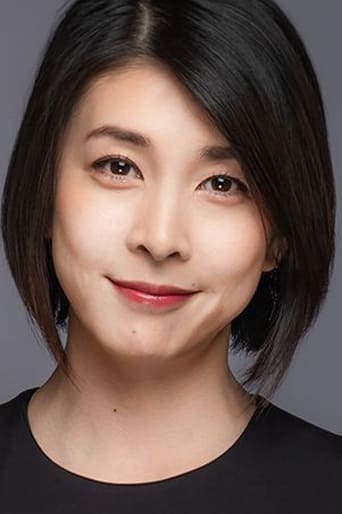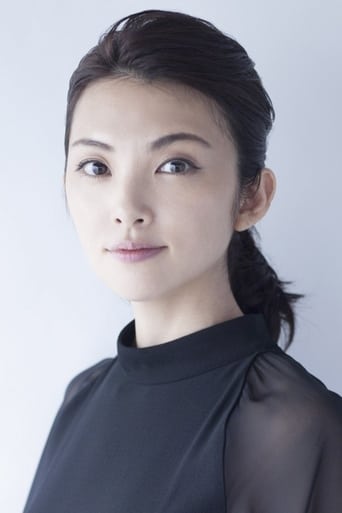

Flowers (2010)
Flowers examines the lives of six women across three generations, from the Show period all the way through to the present day.
Watch Trailer
Cast


Reviews
Flowers is a Japanese film that tells the story of a group of women from one family spanning three generations. Set in the 1930's, the 60's and the present day, it shows the relationships that form, that disappear, as well as the expectations of women in each era. The film is split into 3 segments although the stories cross over and flit between each: it starts in the 1930's and where a young women, Rin, has second thoughts about her marriage despite her fathers anger. This era is brief at the start and quickly the film focus's on the other more recent generations, both of which tend to cross over. In the 1960's three sisters lead different lives, one is a strong willed working woman longing for love and only finding amorous advances from a less than desirable man: one sister cares for their father and has once herself been in love. She and her husband go away to stay at a retreat, only for us to discover she is pretending he is there, as he died some years before. The other sister gets married and has a daughter and all is well until she falls pregnant again and a hard choice must be made: keep the child and risk both their lives of get rid of the child and risk the regret. These two stories alone are so beautifully portrayed, yet deeply moving. In the present day, we meet two sisters, one happy care free who believes everything must be enjoyed, a device she has used since she was her kid, when she understood her mother had died (the sister from the 60's) and her older sister who falls pregnant and without love in her life struggles with the notion. The film near the end takes us back to the 1930's to see what decision Rin has made, one that of course will effect the stories we have already witnessed.It is in writing a complicated story, but on the screen it translates well, even if at times the flitting from era to era becomes a little confusing, with so many characters, although, director Norihiro Koizumi for the 1930's era, films in black and white, while the present day looks bold and new, while the 1960's is wonderfully realised with pastel colours, sound stage style sets and costumes. Visually the film is radiant with great use of landscapes, snow and of course flowers, which often have subtle placement in many scenes. Radiant too are the actresses who portray these very different but very much connected women. The characters and their lives and the connections they have are at times enough to tug at the heart strings of anyone and emotional side of the film is strong. Yet whilst there are many sad elements to this there are also beautiful ones. Elements of sisterhood, family, friendship and love abound throughout providing a really strong story and one that it is easy to relate and connect with.There's something wonderful about going to see a film without knowing much about it and coming away having had a great film experience.More of my reviews at iheartfilms.weebly.com
Director Norihiro Koizumi (Midnight Sun) brings together a stellar ensemble cast of some of Japanese Cinema's more recognizable faces in Flowers, in celebration of the woman of the times from the 30s to the new millennium, while also paying tribute to the distinct look and feel of Japanese cinema over the same time span. It hasn't struck me until now that when you look at a Japanese film, through its themes or misc-en-scene, you can quite accurately predict the specific period of time it's set in or made during, and Koizumi meticulously brings out this distinction in a beautifully melodramatic tale written by Shu Fujimoto and Yuiko Miura.The narrative spans three generations of a family as portrayed by six different actresses in stories over the period from 1939 to 2009, where we begin in pre-WWII before flipping to contemporary Tokyo, followed by tales set in the 60s and 70s that form the bulk, going back and forth in time quite effortlessly since each character and actress hold court in their respective stories. Yu Aoi opens the film in black and white, set in 1939 as Generation 1, where her Rin spends her last day with her family and as a single woman, on the eve of her arranged marriage. But we learn that she isn't as demure as she looks and has a mind of her own, and wedding anxieties aside, is not quite ready to leave her home for a new life outside of her comfort zone. A conflict arises when she goes headlong in her disagreement with her dad.Then we're introduced to Generation 3, which I felt was quite the smart thing to do to keep the audience in temporal suspense, since we now know what will eventually transpire in Rin's story to get to where we are in 2009, but would very much want to know the details in between. Generation 3 sees Kyoka Suzuki and Ryoko Hirosue play sisters Kana and Kei respectively, where they get together with their extended family during a death in the family. Kana's story involves her as a promising pianist being relegated to a page turner, and also coping with the confusion and dilemma of a single motherhood experience, being pregnant out of wedlock. Her sister Kei on the other hand is happily married with a toddler in tow, and is of a vastly different demeanour to the constantly sulking Kana, since her philosophy in life is to find joy in everything she does. This is again a creative brilliance in holding back just enough to keep our interests piqued, where it provides an emotional punch toward the third act of the film, and Hirosue fits the characterization like hand in glove, since I always associate her with something bright and sunny.Generation 2 is where the other half of the six actresses dwell in, being sisters Kaoru (Yuko Takeuchi), Midori (Rena Tanaka) and Sato (Yukie Nakama), with their stories set in the 60s and 70s, and the themes of love and family couldn't be more keenly felt here. Kaoru and Midori meet up back in their mother Rin's house for a festival, which culminates in their sharing of thoughts and counsel. We're also brought back in time for some years which deals with the story of Kaoru and her loss, which is told with a lot of heartfelt sensitivity, in a melancholic tale about loss, the fight in keeping one's memory alive, loaded with sentiments of being afraid to let go. In Midori's case, we see how a headstrong tomboy decide to embrace her feminine side and charms, which I think most modern day feminists might be up in arms against, but hey, it's the 60s we're talking about here, and things like the glass ceiling, and workplace attitudes still being quite backward if measured against today's standards.While Midori's story may be with a tinge of comedy, Sato's story will tug hard at your heartstrings even though what's to come had already been hinted at earlier. It deals with life and death, and the unconditional love any mother develops for her child, unborn even, where calculated risks get taken in order to bring out a life and to introduce the wonders of what our world can offer. Perhaps this story arc is stylistically the simplest and the most direct, but is amongst the highest in the emotional quotient compared to the rest.And what made it work for Flowers, is the extreme attention to detail across all technical departments, from the production sets to the costumes, with each of the actresses sticking closely to the acting styles and demeanours as warranted by characters and actresses of their respective era. It's as if we are looking and gazing at a time capsule of a period gone not only through cinema, but of cinema itself, and this works brilliantly on many levels. Fans of Japanese cinema will probably have a field day with the technical nuances found in all the scenes, techniques and style employed.What is wonderful as well is that the actresses don't have to play their characters across the different timelines, as if each time period snapshots all of them at their respective prime of their lives, without a need for any fanciful makeup or effects to age them considerably, since there's no need to. Earlier generations are referred to by name, incident or flashback, and this provides enough glue to hold down the lineage the narrative subjects us to, without having to be too cumbersome in treatment.Six intertwined stories about love, family and femininity by six wonderful actresses (according to the AsianMediaWiki stated they have all starred in Shiseido's popular Tsubaki commercials), and an ode to Japanese cinema spanning over 70 years cannot be any better than this. I'm a sucker for nostalgia with solid storytelling that's well acted, and Flowers earns its distinction to be shortlisted for being one of the best films this year. Highly recommended!
A combined effort of male director Norihiro Koizumi and male ad-agency creative director Takuya Onuki (he conceived the film's idea while working on a female shampoo commercial), it is not hard for the thinking girl to dismiss Flowers as an indulgent and idealistic patriarchal take on Japanese femininity. The title itself – a stereotypical image associated with being female. It does not help either that the problems that the six women face are either related to men or motherhood. From a forced marriage to fatal pregnancy complications to the loss of the newly wedded husband, tragic events not out of place in a soap opera plot seem to curse three generations of beautiful women. Through soft lingering gazes into the windy distance and solo teardrops on SK II-treated cheeks, they express minimal pain like ideal, perfectly restrained, silent Japanese women.Now girls, (depending on which feminist wave you are riding on) before you start burning or pushing up your bras and objecting to the lack of girl power, do consider that the film's subscription to feminine stereotypes is intended to portray the significance of family over self. The real struggle that the six women face is not of tragedy, but with choosing between self-expression and self-control or individualism and collectivism – something everyone can relate to. By portraying six different yet interconnected lives all choosing the self-sacrificing route and going back to the family as a point of healing, the film really tries to remind us of the importance of kinship. The story of Rin – the family's first generation woman – is particularly touching in its conclusion. Set in the 30s, she is faced with the traditional arranged marriage dilemma – please her father or please her self? You have to watch for yourself how she decides, but do prepare Kleenex at hand. In fact, that tissue paper is necessary in a few other scenes as well even though the film is not really a tearjerker. What Flowers considerably is, is a heartwarming chick flick, albeit a quite welcoming one in a genre filled with the same old storyline of predictable heroines finding love and living happily ever after. Its message of family is something to ponder upon. The film might go too much by telling six different stories to drive home the point, but maybe this is something we need to counter excessive individualism in today's Facebook-obsessed society.The montage quality of the film is easily appealing; as it not only allows the audience to make distinct three generations of characters, but to also let them enjoy the homage to past filming styles. As the film spans among four time periods – 1930s, 1960s, 1970s and early 2000s – each of them is directed according to the film style of the respective eras. The 1960s story of one of Rin's daughters – Midori – is probably the most enjoyable with its throwback to a comical retro sound stage vibe and vintage clothes.www.moviexclusive.com
To followers of the Japanese cinema, the name of the cast of six top stars will make the heart skip 4 or 5 beats, maybe even 6, for some. But this is not simply star gazing. This is a very engaging, endearing, touching movie that is pleasantly devoid of crafty contrivances. Goes down like a draught of natural, smooth, clear spring water. The story spans three generations – 30s, 60s and 90s – starting with the first, moving to the last and back to the middle, with each period clearly labelled at the start of the segment. After that, it moves back and forth (but never to the extents that it is confusing) revealing the cause and effect of the various stories of these six women. For simplicity, I'll use the names of the actresses rather than the names of their characters in the brief synopsis that ensues. In the movie, the stories do not unfold in the linear fashion of my narration.Ironically, Yu Aoi the youngest of the six plays the oldest (in terms of generation), a daughter in the 30s when arranged marriage was the norm. Aoi, fortunate enough to have received a "modern" education, is somewhat rebellious. The love of the authoritarian father is depicted in subtle hints. In the end, Aoi, ever fortunate, finds happiness with the husband that she had never set eyes on before, and became the mother of three lovely daughters.In the 60s, we see two of these three daughters in a reunion at their old family house. The third never appears together with them in the same scene but is connected to them in a brief phone call. Of the two, Rena Tanaka provides most of the comedy in the movie, being a career-minded woman generally viewed as an outcast and monstrosity by the men in the office. Comedy notwithstanding, the choice between career and marriage (there is a devoted admirer) is a real dilemma in that period in time. Sharing in sisterly talks with her is Yuko Takeuchi, whose story is told in the most artsy style among the six, utilizing freely montages that might even be mystifying in the beginning. The story is actually quite simple: an ideal, romantic marriage is shattered with the lost of the husband in a tragic accident. It's about Takeuchi's struggle to carry on.The third sister in the 60s, Yukie Nakama, is the link to the third generation. Here is another happy family which includes also a wonderful young daughter (6 or 7) who has shown promises in music. What should have been a cup-runneth-over, a second pregnancy, becomes an agonizing dilemma when the doctors warn that the mother's life is at risk. Nakama however is determined to have the baby, knowing that she will not be able to live the rest of her life haunted by the thought that she has deprived this little baby of all the joys of life that her older sister is experiencing. The tragic outcome: the baby survived, the mother died.In the 90s, Yoaka Suzuki, the older daughter, is now a successful concert pianist, unattached despite some earlier romantic interludes. The younger sister Ryoko Hirosue is happily married, with an adorable little son. The sisters come together at the funeral of their grandmother Aoi who just died at 93. Hirosue, ever observant and considerate, asks Suzuki to quit smoking, having noticed that her sister is pregnant. It is Suzuki's painful decision whether to have the child as a single mother. The pregnancy opens old wounds as Hirosue struggles with her "original sin" – she is alive only because of her mother's courage and death, in insisting on giving birth to the second child. I have related the events without much reference to the emotion contents although it can be readily seen that there is no shortage of touching poignancy between father and daughter, husband and wife, mother and daughter, as well as between sisters. As mentioned, this movie does not succumb to cheap contrivances but depicts the emotions scenes naturally, as they would unfold in real life. The ending is upbeat, as an ode to life, with as accompanying music ONJ's "Have you ever been mellow", a wonderful choice. For those unfamiliar with some or, heavens forbid, all of the actresses, the movie starts with a short montage of each, preceded by their respective names (in Japanese Kanji which is the same as Chinese characters). The end credit is similarly handled.




